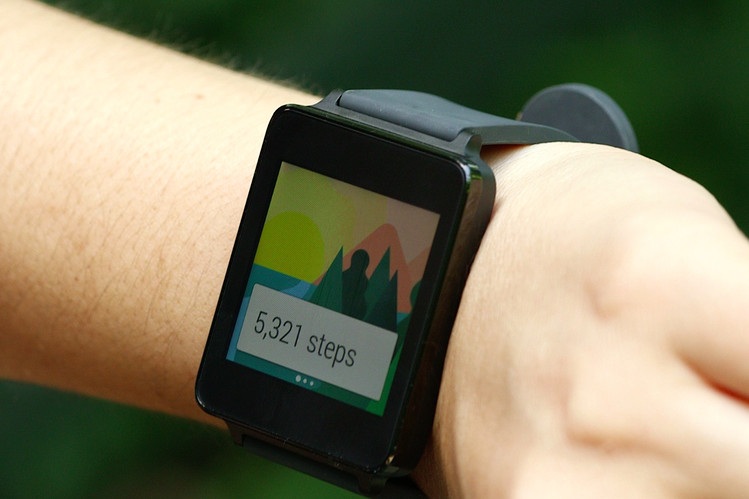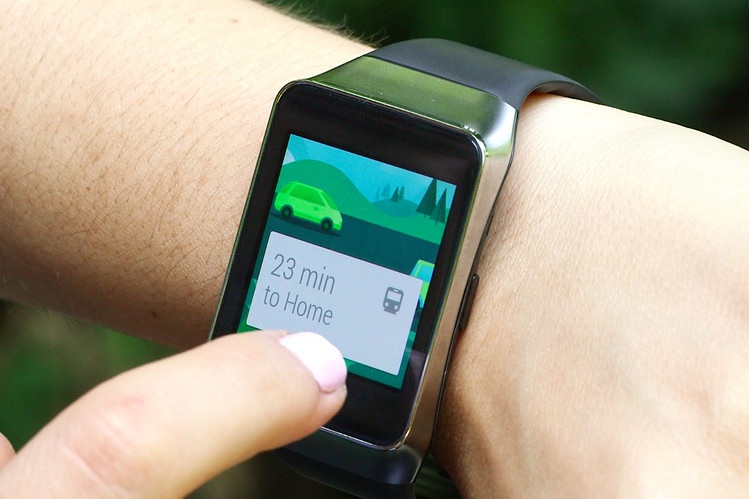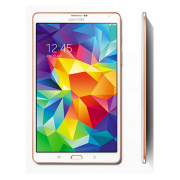Android Wear's first smartwatches are like phones on your wrist
Are the first Android Wear watches the remedy to pulling our phones out over and over? WSJ columnist Joanna Stern reviews the first truly 'smart' watches.
I used to believe that in the next stage of evolution we'd grow a third arm. That would be a sign that our bodies have adapted to one of the greatest physical impediments in human history: constantly having to pull out our smartphones to see if we have important messages.
But there's a less genetically drastic solution. A smartwatch can now deliver the most important and timely information straight to one of your existing wrists. And where Samsung and some smartwatch start-ups have failed to gain momentum, Google's new Android Wear may be the first viable wrist-top platform.
Starting next week (in the US) you'll be able to get two of the first Android Wear smartwatches -- the $US199 Samsung Gear Live and the $US229 LG G Watch. But should you? Thanks largely to Google Now, the online personal assistant that prompts you with information you need, these feel like the first watches that are truly 'smart'. But there's still too much smartphone in them. I don't want something on my wrist that looks and acts like a phone.
Telling more than time
When you download the Android Wear app on your Android phone and pair it with the watch via Bluetooth, things start ticking. Just be warned, unless your phone is running Android 4.3 or higher, these watches are no more than chunky bracelets.
The screen constantly displays the time, with your choice of classic analog clock options, bright and fun digital layouts and some creative blends.
Swipe up on the 1.6-inch touch screen and tiny cards display key info such as phone notifications, the weather forecast and even how many steps you've taken.
It also shows Android Wear's real secret weapon: information from Google Now. The interface is easy; swiping left allows you to see more, a long swipe to the right dismisses the card.

The G Watch shows your current step count. Jeffrey Cullen/The Wall Street Journal.
You can also just tell the watch what to do. Its microphone is always listening for a voice prompt -- "OK Google" -- and spoken commands such as "search the Web," "send a text," "set a reminder," etc.
"OK Google, text Mom: I'm going to make the 3pm train," I said into the watch as I was running through Penn Station. Even though my phone was buried in one of my many bags, the text message fired off.
Even in louder environments where I expected it to fail, the voice recognition was fairly accurate. And yes, when I raise my arm to my mouth, even to set a reminder to pick up toothpaste, I feel like a Secret Service agent.
Telling you what to do
But what sets Android Wear devices apart from previous smartwatches is that they tell you what you need even before you realise you need it. Google Now, which mines Gmail, calendar, Web searches and other Google interactions, is a perfect fit for the wrist.
"You should leave now for Dave and Laura's rehearsal dinner," my wrist buzzed at 7.05pm as I was blow-drying my hair. With one swipe to the left, Google told me there'd be traffic on the way to the restaurant. I ended up arriving seven minutes late -- but I blame my uncooperative hair, not the watch.

Thanks to Google Now, the Galaxy Gear Live displays how long it will take to get home using public transport. Jeffrey Cullen/The Wall Street Journal.
Some updates are less vital, but still helpful. Having recently searched for The Price is Right, my wrist buzzed to tell me the game show was going to be on in a few hours. Every morning, it tells me how long it will take to get to work on my usual subway route (albeit with an ugly, cartoony transportation scene).
Because Google can piece together all this information, it's hard to imagine any competing smartwatch platform, even Apple's own expected model, delivering such relevant and timely alerts. Of course, to reap those benefits it means trading Google access to a lot of your information.
Third-party apps are also starting to work with Android Wear. My Delta boarding pass appeared on the watch at the airport, after I checked in using the Android smartphone app.
Telling you what's up
I just wish the software were as smart about notifications. Android Wear is designed to transmit all your phone's notifications to your watch. For someone like me, who gets a lot of mail, tweets and Facebook comments, that's a lot of wrist buzzing.
When it comes to this topic, there are two types of people, Google's director of Android engineering, David Singleton, told me. There are those who "love to have exactly the same content on their phone and watch because it gives them the comfort that they don't need to pull out their phones," he said. Then there are those, including me, who want a watch to report just what's important.
For that second user, there's simply not enough customisation yet. Either I get buzzed every time someone emails me, or I don't get any email alerts at all. Sure, the watch helps me look at my phone less, but I'd prefer a middle ground, where my wrist vibrates only when my editor or fiancée emails me. Mr Singleton says Google is working on contact-specific notifications and the next version of Android, due out in Autumn (US time), will have deeper notification controls.
There are more signs of Android Wear's infancy. While third-party fitness apps like Nike will start to work with the software, the watch's current tracking capabilities don't go much beyond step counting. The Samsung model does have a heart-rate monitor, but for fitness you're still better off with a dedicated band.

The Samsung Gear Live pictured left, the LG G Watch pictured right. Jeffrey Cullen/The Wall Street Journal.
Performance-wise, the Samsung edged out the LG, which tended to stutter and lag. And for their bulk, both watches' battery lives should be better. They had to be charged at least once a day in proprietary charging cradles. Both screens are extremely hard to see in direct sunlight.
While the Samsung is slightly better than the LG in terms of design and screen quality, it's really like comparing the qualities of two bruised bananas. Both look like shrunken phones stuck to your wrist, rather than timeless accessories. Singleton says watches from Fossil and other traditional watchmakers are on the way. Motorola's Moto 360, due out this summer, is also more attractive, with a round, albeit rather large, face.
The first smartwatches from Google's platform are the smartest yet but buying one right now would be stupid. Not only are there more stylish Android Wear watches and improved software coming soon, but Apple is expected to release its own watch before the year's end.
For the time being, I'll still be digging in my bag for my phone -- and wishing for that third arm.
Write to Joanna at joanna.stern@wsj.com and at @joannastern on Twitter.
















